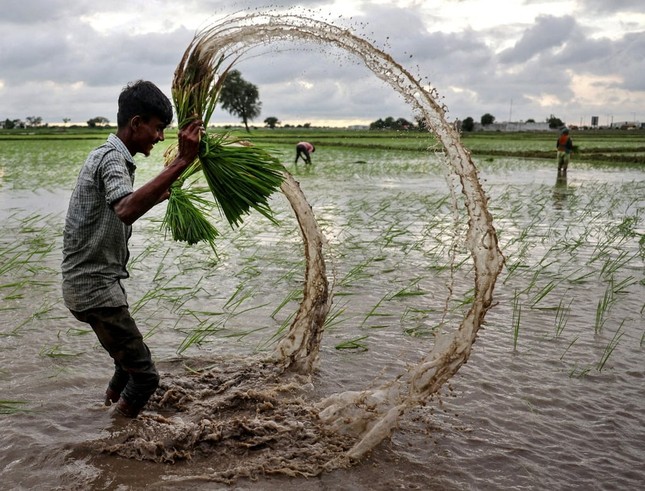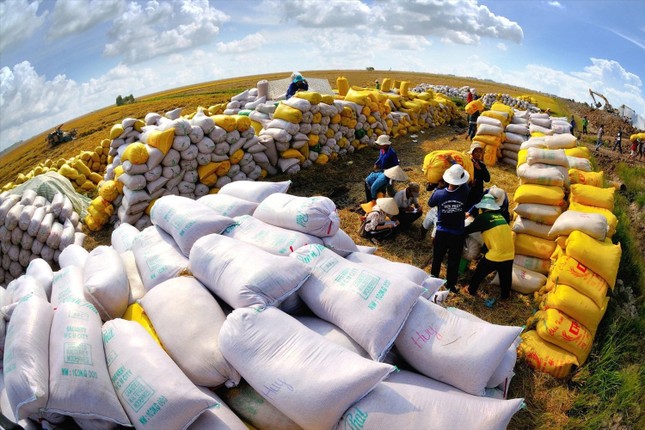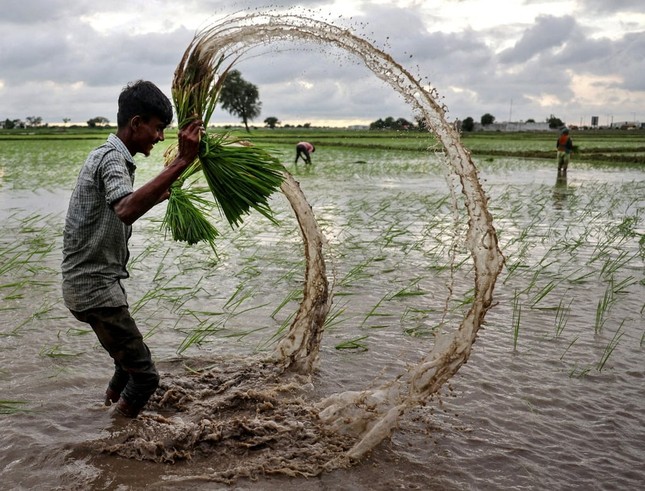Rice Supply Concerns in Asia
On May 7, India conducted airstrikes and fired missiles at Pakistan in retaliation for a deadly attack on tourists in the Kashmir region. Pakistan immediately responded with military action on May 8, raising concerns about a prolonged confrontation between the two nuclear-armed nations.
Despite India and Pakistan agreeing to a ceasefire on May 11, explosions continued to be heard in border towns and cities. India accused Pakistan of violating the agreement.
India is the world’s largest rice exporter, with Pakistan ranked fourth. Both countries are key suppliers of essential food items, including rice and onions, to Southeast Asian countries.
Experts predict that the conflict between India and Pakistan could disrupt trade and lead to rising food prices globally. Countries like Malaysia, Singapore, and Indonesia are expected to be the hardest hit due to their heavy reliance on imports from these two nations.
Malaysia’s Minister of Agriculture and Food Security, Mohamad Sabu, emphasized the importance of political and economic stability in India and Pakistan for Malaysia’s food security. He stated, “If a war or tension affects the operation of ports or logistics infrastructure, our rice imports could be disrupted.”
Malaysia consumes more than 120 kg of rice per capita annually and produces only half of its domestic needs. The rest is imported, mainly from India and Pakistan, followed by Vietnam, Thailand, and Cambodia.
In a press conference, Arthur Joseph Kurup, Deputy Minister of Agriculture and Food Security, expressed concern over the impact of disruptions from their main partners:
“We currently have enough rice reserves to last over six months. However, if our supply from key partners is disrupted, not only will our supply be affected, but domestic market prices will also be impacted. In recent years, the global rice market has been sensitive to political fluctuations. A conflict in South Asia could trigger a new crisis.”

A farmer planting rice in a field outside Ahmedabad, India. Source: Reuters.
Kurup attributed the recent market fluctuations to India’s long-term low-price strategy, which forced competing exporters like Vietnam and Thailand to lower their prices.
Thailand’s rice exports declined by a third to 2.1 million tons in the first quarter as countries opted for cheaper Indian rice.
Thailand’s rice exports are predicted to drop by 24% this year, while Vietnam may experience a 17% decrease.
Global rice prices are hovering around $390 per ton and are expected to rise due to geopolitical instability.
Vietnam in the Eye of the Supply Storm
Despite the turmoil in South Asia, the Vietnamese rice market has maintained relative stability thanks to abundant domestic supply and prudent price regulation.
According to the Vietnam Food Association (VFA), Vietnam’s 5% broken rice is currently offered at around $398 per ton, higher than Indian rice but lower than Thai rice.
A VFA representative stated, “Recently, Vietnam’s rice export prices have slightly fluctuated following regional trends. The market remains quiet after the holidays, and demand from traditional markets like the Philippines and Indonesia has not yet surged. We are closely monitoring the situation between India and Pakistan to respond flexibly in terms of pricing strategies and order management.”
In key rice-producing provinces like An Giang and Can Tho in the Mekong Delta, raw rice prices have slightly increased due to recovering export demand post-holidays. Businesses and cooperatives have started to stockpile, anticipating more orders from importing countries aiming to prevent shortages in the region.

Vietnam in the eye of the supply chain storm. Illustration: IT.
Domestic retail rice prices in traditional markets have remained stable, with no shortages or price gouging observed. This stability is attributed to consistent supply from local sources and stringent control by authorities.
The An Giang Agriculture and Environment Department confirmed that while rice prices have slightly increased, there has been no abnormal hoarding or stockpiling by farmers or businesses.
Amidst the threat of global supply chain disruptions, Vietnam’s rice market stability serves as a pillar for the region and a testament to the country’s ability to regulate, direct, and protect consumers within the national agricultural and food system.
“A Streamlined Powerhouse: Ministry of Agriculture and Environment Merger Results in a Lean 30-Unit Structure”
The Ministry of Agriculture and Environment has undergone a significant restructuring, consolidating and organizing its units. With a total of 53 units previously belonging to two separate ministries – 26 from the Ministry of Environment and 27 from the Ministry of Agriculture and Rural Development – the new ministry has been streamlined into an efficient 30-unit structure.
The Green Revolution: Celebrating 50 Years of Vietnam’s Agricultural Excellence
Over the past five decades, Vietnamese agriculture has witnessed remarkable progress, evolving from a state of significant scarcity to a country that ensures domestic food security and contributes to global food security as a leading rice exporter. With food security assured, Vietnamese agriculture has gradually transitioned from rice monoculture to a relatively comprehensive agricultural development approach.
The Art of Optimizing Land Use: A Study on Adjusting Land Allocation Post-Merger
Deputy Prime Minister Tran Hong Ha has instructed the Ministry of Natural Resources and Environment to take the lead and collaborate with other relevant ministries, sectors, and local authorities to finalize a plan for adjusting land-use targets. This includes calculating the transitional phase for the implementation of land-use planning and plans when excluding the district level.
Bright Spots in Vietnam-India Economic and Trade Cooperation in 2024
The trade volume between Vietnam and India is expected to surpass the $15 billion mark set by the two countries’ leaders, and it is anticipated to reach $20 billion in the coming years.








![[Photo Essay]: Experts, Managers, and Businesses Unite to Forge a Path Towards Sustainable Green Industry](https://xe.today/wp-content/uploads/2025/07/z678592918-218x150.jpg)












